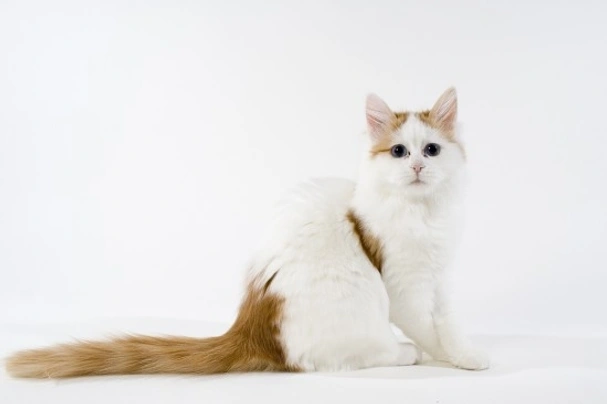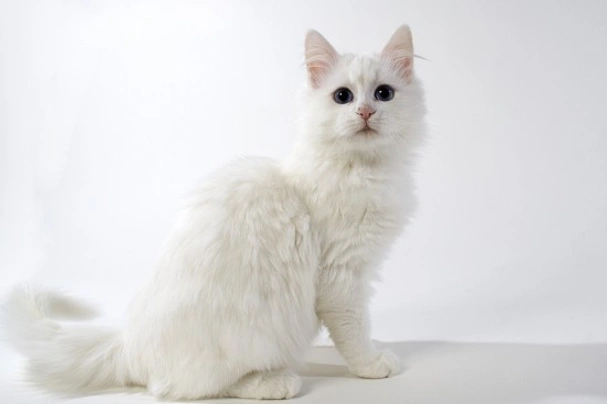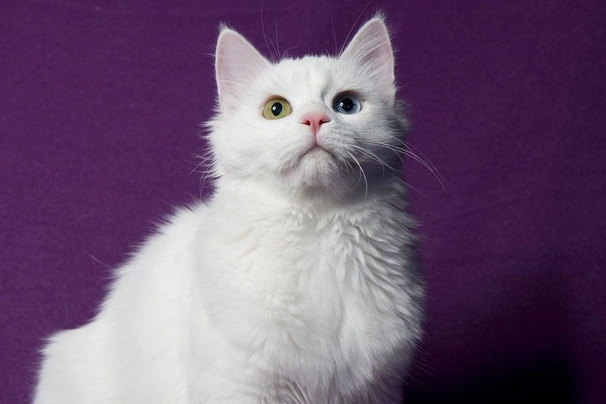Pets
Pets for studWanted petsBreedersAccessories & services
Knowledge hub
Support
Support & safety portalTurkish Van
Introduction of the Turkish Van
The Turkish Van is a semi-longhaired variety of cat originating from the area around Lake Van in Eastern Turkey and often known to their growing band of followers simply as 'Turks'. They are sometimes nicknamed the 'Turkish Swimming Cat' as they are said to love a dip during the hot summer months in their native country and they love playing in water. This breed is also famous for its totally unique coat pattern mainly pure white but with striking markings on the head and tail which is so distinctive that the pattern is even called 'Van' in other breeds. They are still relatively rare in Britain despite having been recognised by the Governing Council of the Cat Fancy (GCCF) for more than 40 years with less than fifty new registrations in 2010. The Turkish Van shouldn't be confused with the Turkish Angora and the Turkish Vankedisi both of which are two completely different breeds in their own right.
History of the Turkish Van
The so-called 'Van' pattern occurs naturally in large numbers of the cat population of the Near East but is quite rare elsewhere. Legend has it that when Noah's Ark came to rest on Mount Ararat after the flood not many miles from Lake Van the cats left to go down the mountain and the coloured mark seen on their shoulders was the result of God having blessed them as they left. The exact origins of this breed are a little hazy even though they are thought to have exited in the Middle East for hundreds of years. They certainly captured the imagination of 19th century artists as a Van-patterned cat can often be seen sitting amongst the rugs and carpets in paintings of the time depicting Eastern bazaars and markets. However the modern history of this breed is well documented and in 1955 a journalist working for the Turkish Tourist Board Laura Lushington and her friend Sonia Halliday a photographer were offered two Turkish Van kittens (a male and a female) and successfully brought them back into Britain. In due course kittens with exactly the same markings were born and several more successful litters followed. Next having gained the support of some highly regarded British breeders and cat show judges the two ladies returned to Turkey in 1959 and brought back another two kittens. They established a carefully recorded breeding programme for the Turkish Van and the breed eventually achieved full GCCF Championship in Britain in 1969. They were a little later in reaching the USA and the first Turkish Vans weren't imported there until 1982 gaining Championship status with the Cat Fanciers Association (CFA) in 1994.
Appearance of the Turkish Van
The Turkish Van is a large muscular cat with adult males sometimes weighing as much as 18lb though often not reaching full maturity until they are three years old. Traditionally their coats were auburn/white or cream/white the white being a pure 'chalk' white with no trace of yellow against the striking colour of the head and tail and occasionally a spot of colour on the shoulder. However although the basic coat colour is always white other colours and patterns have gradually been introduced since 1969 including black blue tortie and tabby. The coat is soft and silky with no woolly undercoat although the winter coat is denser than the summer coat and it has a full ruff which becomes more pronounced with age. The tail is a magnificent full brush and there are dramatic tufted ears. The eyes are large and oval with colour varying between blue and amber or they are often odd-eyed with one eye of each colour.
Temperament of the Turkish Van
Turkish Vans are a very intelligent breed and can be very affectionate but they are also quite independent and interaction with people will be on their terms which is thought to reflect their early beginnings as rural cats in an environment that was often harsh. However enthusiasts of this breed say that a lot depends on their individual early days and how much contact time they have with humans as small kittens. Once their confidence is won round they are often very playful and will attach themselves to a chosen human although they also like airborne activity with games often taking place in between tall pieces of furniture. They have thick waterproof coats and are fascinated by water and dripping taps like their ancestors and if they go out they will not be worried about a bit of rain. The voice of the Turkish Van is also quite unique described by many owners as sounding rather like a sheep albeit a quiet one.
Intelligence / Trainability of the Turkish Van
Despite the dominance of white in their coats the Turkish Van is not prone to deafness. It is generally a very healthy breed of cat with no breed-specific problems detected so far and they should live well into their mid teens. Kittens should always be purchased from a reputable breeder and in common with other cats they need annual vaccination boosters against the common feline ailments of flu and enteritis as well as against Feline Leukaemia if they go outdoors. However if allowed out it should be remembered that they ancestors were successful hunters and they will ruthlessly pursue any attractive prey without any regard for their longer silky coat and white fur and may well bring their wildlife trophies home dead or alive.
Children and other
The semi-longhaired coat (and especially the tail) of the Turkish Van will need regular combing to keep it free from knots and tangles and to remove any loose hairs which could cause fur balls. Although they are a very active breed they will adapt to life indoors although they will need to be kept well occupied with toys and other distractions. They will eat most good quality brands of cat food and will enjoy treats of chicken ham and even grated cheese. However cows' milk will probably give them a stomach upset and a bowl of water should always be available. With their interest in water it is especially important with this breed of cat that toilet seats are kept firmly down.
Health of the Turkish Van
Caring for the Turkish Van
Grooming of the Turkish Van
Exercise of the Turkish Van
Feeding of the Turkish Van
Turkish Van price
Related adverts
See all
Turkish van fur
£200

2x male and female Turkish van kittens
£100



